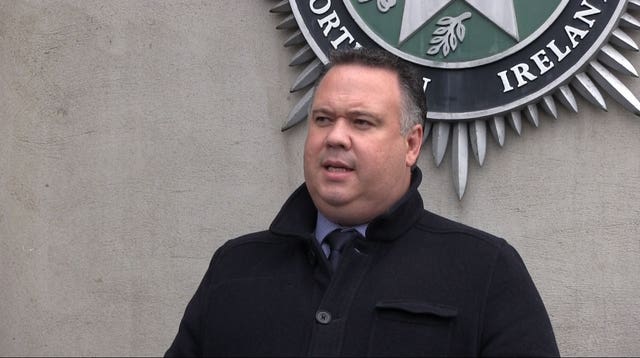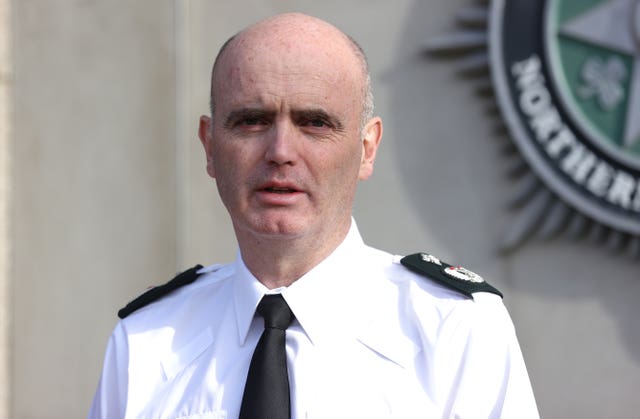The raising of the terrorism threat level in Northern Ireland comes just a year after it was lowered for the first time in 12 years.
The intervening 12 months saw an audacious attack on a senior detective at a sports centre in Co Tyrone.
Police Service of Northern Ireland (PSNI) Deputy Chief Constable Mark Hamilton said there had been seven attacks since the threat level was lowered last March, including the shooting of Detective Chief Inspector John Caldwell in February 2023.
Mr Caldwell was shot several times in front of his young son as he put sports equipment into the boot of his car after a youth coaching session.

He remains in a critical condition in hospital after the attack in February.
Dissident republicans have been blamed for that attack, as well as an attempt to kill two police officers with a bomb in Strabane in November.
The New IRA claimed both attacks.
It has been the most active of the dissident republican outfits in Northern Ireland in recent years.
It is believed to be the largest of the groups and has been linked to a number of murders including those of journalist and author Lyra McKee in 2019, Pc Ronan Kerr in 2011, and prison officers David Black in 2012 and Adrian Ismay in 2016.
The New IRA is believed to have been formed between 2011 and 2012 after the merger of a number of smaller groups, including the Real IRA – the group behind the 1998 Omagh bomb.

The group is strongest in Londonderry and Strabane, with a presence in Belfast and other pockets in Co Tyrone and Lurgan in Co Armagh.
Earlier this month Arm na Poblachta (Army of the Republic) said police officers’ families would be considered targets.
It is a smaller dissident group which emerged in 2017 but has not been as active.
There has also been activity from loyalist paramilitaries in Northern Ireland.
In March 2022, then Irish foreign affairs minister Simon Coveney had to be evacuated from a peace and reconciliation event in north Belfast after a security alert.
The UVF was suspected as having been behind the incident.

Over the last week a spate of attacks in the Ards and North Down areas has been attributed to a feud between two UDA drugs gangs.
However the loyalist paramilitary groups are not considered a threat to national security and therefore are not a factor in MI5’s assessment.
The threat level is subject to continuous review, and judgments about the threat are based on a wide range of information.
In March 2022 it was reduced from severe to substantial for the first time since it was first published in 2010.
The severe rating means an attack is considered highly likely.
Mr Hamilton told reporters in Belfast on Tuesday that police will not be deterred by the threat level.
“The threat level was severe for a number of years… we’re somewhat used to it. It doesn’t mean we accept it, we have to work even harder to get it to a level which is far more acceptable, which effectively means the eradication of terrorism,” he said.




Comments: Our rules
We want our comments to be a lively and valuable part of our community - a place where readers can debate and engage with the most important local issues. The ability to comment on our stories is a privilege, not a right, however, and that privilege may be withdrawn if it is abused or misused.
Please report any comments that break our rules.
Read the rules hereLast Updated:
Report this comment Cancel